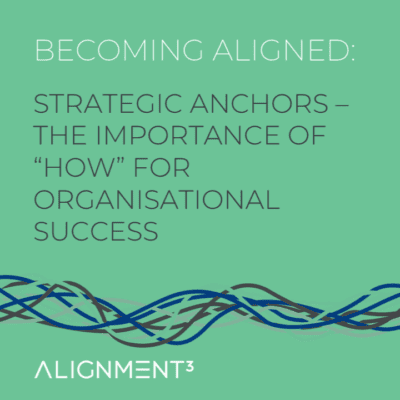
The talent you believe you need is at your disposal, and you’ve empowered them to “run the business like they own it”. Yet, how often are you and the c-suite frustrated because your project teams hold multiple meetings, deliberate over the same issues, and miss the milestones that you so need to hit in your time-limited runway? With all their intellectual horsepower why can ‘t they get this done??!!!
So, what do you do? Haul the project lead into the next c-suite meeting to explain? Intervene and (micro)manage the issue? Or give a rallying cry for now (as you have a critical meeting tomorrow with investors)? None of these options is appealing and, in our experience, won’t stop this scenario from recurring. Something foundational is missing in how your employees are attuned. That something is psychological safety.
If the engine of change is honest conversation, then psychological safety is the oil that lubricates that engine for peak performance. Organisations are complex relational entities, products of multiple interactions between people. At Alignment Cubed, we take the position that their success highly depends on the ability to create conditions for the emergence of effective dialogue. Explicitly prioritising psychological safety can unlock your teams’ full potential, establishing a key foundation for a healthy, aligned organisation – positioned for success.
Other Signs That Your Engine Needs Oil
- Silence or lack of challenge in meetings
- Significant failures or mistakes not reported
- Finger-pointing or scapegoating after setbacks
- Defensiveness
- Important information not shared across disciplines
- A pattern of promising talent leaving (especially those who were initially enthusiastic)
Being alert to these indicators can help you recognise unspoken issues that could be severely impacting your organisation’s performance, innovation, and overall success. By changing the nature and quality of the conversations in your team, the quality of your outcomes increases exponentially.
What is Psychological Safety?
Psychological safety means working in an environment where people hold the belief that they will not be punished or humiliated for speaking up with ideas, questions, concerns, or mistakes. In such a workplace, people don’t hold back or put on airs, they feel comfortable expressing themself without fear of embarrassment or retribution. They can admit errors, ask for help, or share unconventional ideas without being shut down or treated poorly. This openness allows everyone to learn, collaborate, and do their best work.
In contrast, a workplace lacking psychological safety is one of fear and judgment. People feel rushed to have all the answers and appear perfect. They conceal mistakes and stay quiet even when they have suggestions that could improve things.
A common misconception is that psychological safety is about everyone becoming more comfortable. In actuality, psychological safety encourages healthy disagreement between those expressing differing perspectives. Members become accustomed sitting with the discomfort that difference can bring. They explore these perspectives with curiosity and empathy. Hence, teams with high psychological safety often have more debates and disagreements than those without. The difference is that these conflicts are focused on ideas and problems in pursuit of the shared purpose and not personal attacks. This leads to better decision-making and innovation.
The High-Performance Oil for Your Innovation Engine
Organisations with higher psychological safety perform better on almost any metric compared to those without it. However, despite what you may think, psychologically safe environments at work are rare.
In an environment where effectively handling collaboration, failure, and uncertainty defines success, psychological safety is a crucial source of value creation and a potential competitive advantage enabling:
- Greater Innovation: Team members feel free to propose unconventional ideas that could lead to breakthroughs.
- Risk-Taking: Breakthroughs often require calculated risks. When people feel secure, they are more likely to take these risks.
- Team Learning: Higher quality interactions through the collective comfort with being able to lean into “not knowing”. Curiosity to explore and learn from failure, to navigate changing environments and challenging conditions more effectively.
- Open Collaboration: Freedom, trust, and security to fully engage, take calculated risks, share information, and openly work together as a unified team.
- Higher Quality Work: Improved feedback, a willingness to help, and productive dissent.
The Leader’s Role: Master Mechanic
As the Leader, you are the master mechanic. While psychological safety is actually co-created (another misconception), the leader plays a crucial role in shaping the conditions for its emergence as a pillar of organisational culture. It’s natural for people to manage their interpersonal risk at work. But, no one gains from silence. To reverse this takes focus and effort to help people develop new beliefs and behaviours. Encouragingly, if consistently worked on by leaders, there are three areas that you can tend to nurture the environment to raise psychological safety:
- Setting the Stage: Clarify what’s at stake and why psychological safety matters to the organisation’s mission. Make it an explicit priority. Set expectations about failure, uncertainty, and interdependence and clarify the need for voice. Acknowledge that failures will happen and that the primary goal is to learn from them.
- Inviting Participation: Demonstrate situational humility and model vulnerability yourself. Be humble, share your own doubts, and admit when you’re wrong. Acknowledge gaps, and simply say “I don’t know.” Practice inquiry by modelling intense listening, asking good questions, and seeking dissent. Set up structures and processes to gather input, solicit feedback, and provide guidelines for dialogue.
- Responding Productively: Listen, acknowledge, and visibly value those who constructively challenge you. Express sincere gratitude when people take the courage to speak up. Destigmatise failure by moving on, offering help, and co-creating a way forward. Finally, and importantly, sanction clear violations that damage psychological safety.
Tuning Your Innovation Engine for Peak Performance
When people speak up, reveal vulnerability, show empathy, ask generative questions, and commit to continuous learning, good things happen. Psychological safety directly oils the cogs of relatedness (one of the three conditions of self-determination theory by which intrinsic motivation emerges). It will improve how your teams connect and how its members see one another’s different perspectives. It will enable them to more openly and innovatively interact with each other in ways that co-create value that is greater than the sum of the parts. Thus compounding your organisations intellectual horsepower and attuning them to collectively solve your most complex challenges. Where a single therapeutic breakthrough can change lives, psychological safety isn’t just oil for your innovation engine; it’s rocket fuel.
As a Fearless Organisation Scan practitioner, Alignment Cubed can support you in the education, assessment and improvement of psychological safety in your organisation. If the state of the dialogue in your organisation is not working to your advantage, if there are polite nods rather than vigorous dialogue, or a culture of the after-meeting meeting, then contact Jonathan or Majid to talk about how we can help.
Want to dive deeper yourself?
The following resources cover a range of topics including psychological safety and its impact on innovation. Each of these offers unique insights that can help you deepen your understanding of the concepts discussed in the article and create an environment where psychological safety thrives.
- The Fearless Organization by Amy Edmondson – The definitive guide to psychological safety.
- Teaming by Amy Edmondson – Master cross-disciplinary collaboration.
- Right Kind of Wrong by Amy Edmondson – Reframing failure, a skill that helps overcome our spontaneous aversion to failure.
- Getting Naked: Shedding the Three Fears that Sabotage Client Loyalty by Patrick Lencioni – the theory of vulnerability and concrete steps for putting it to work in any organisation.
- Humble Inquiry by Edgar H. Schein – The art of asking over telling.
- Creativity, Inc. by Ed Catmull – Insights from Pixar on nurturing innovation.
- Failing to Learn and Learning to Fail (Intelligently): How Great Organizations Put Failure to Work to Innovate and Improve by Mark D. Cannon & Amy C. Edmondson
- What Google Learned From Its Quest to Build the Perfect Team, by Charles Duhigg, 2016
- Hard Truths About the Meeting After the Meeting by Brian Heger, 2024
- Psychological Safety and Learning Behavior in Work Teams by Amy C. Edmondson, 1999



